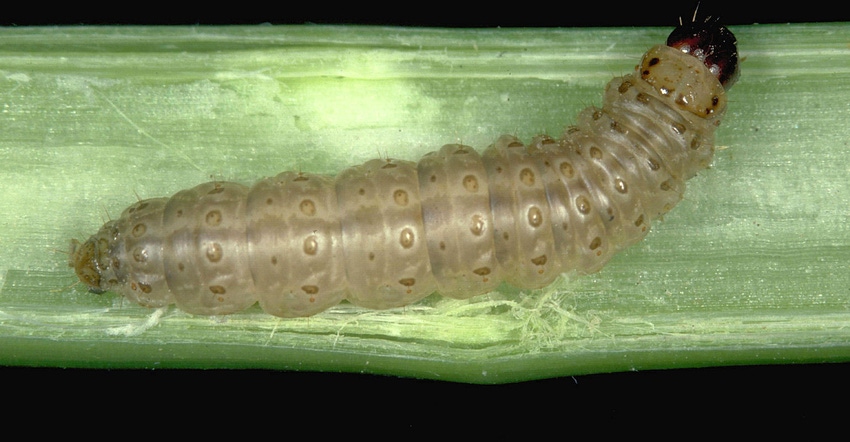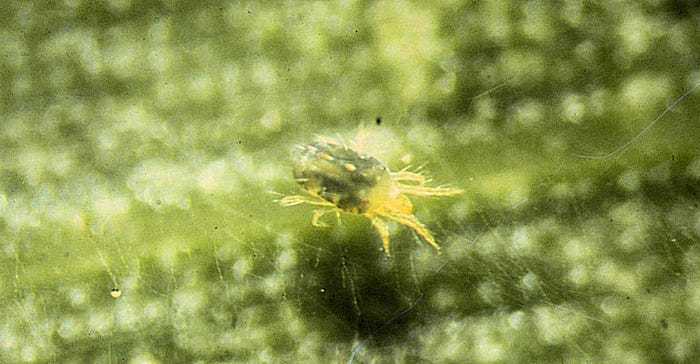June 29, 2018

The weather and conditions are right for key pests to start moving into corn fields and Assefa Gebre-Amlak, Extension specialist, Colorado State University, is offering insight on the subject. There are two major insect pests in corn that need to be monitored, European corn borer and banks grass mites. Hot and dry conditions hitting the region are expected to advance early development and increase banks grass mite in corn, Gebre-Amlak warned in a recent release.
He pointed out that European corn borer pest alerts can be found at northernipm.colostate.edu, which contains pheromone trap counts from different locations around the state.
First-generation moths like to lay eggs in taller, early-planted fields and any non-Bt hybrids fields should be scouted soon. Some hybrids have useful resistance to the first brood of the borer, which feeds on whorls and later enters the stalk. Control from Bt corn is effective, but only for plants that have above-ground protection, those focused on rootworm control won't be much help against corn borer, Gebre-Amlak advised.
European corn borer usually goes through two generations each year. "The young larvae feed first on the leave near where they hatched. As the larvae grow, they move to the whorl or leaf sheath area and feed," he said. "When leaves emerge, the 'shot hole' feeding signs in the leaves can be seen."
Most mature larvae will bore into the stalks, feed and finish development there. Second generation borers cause ear damage, tunneling in the shank and feeding on silks, kernels and cobs. He noted that you'll see signs of infestation that include dropped ears, broken shanks, stalk breakage, sawdust-like castings on leaves and holes in the stalks.
Tiny but effective
The banks grass mite is a tiny, greenish pest that can move into winter wheat in the fall as their summer field corn hosts dry down. They return to corn by walking short distances or by being windborne on silk threads over longer distances. In the spring, small pearly white eggs are laid which eventually give rise to pale to right green male and female adults, Gebre-Amlak said.

SECOND CORN PEST: The banks grass mite like hot, dry weather and can build up on the crop from the bottom up. The tiny pest can be a yield robber.
"Webbing on leaves and discoloration are often the first signs of an infestation. Initially, BGM are most abundant on the lower third of the plant and density declines as the infestation moves up in the plant," he said. "Mites damage corn and small grains by piercing plant cells with their mouthparts and sucking the plant juices."
The tiny pest builds up on the plant from the bottom up. Treat when there is visible damage in the lower third of the plant, and small colonies are present in the middle third, before hard dough stage. An alternative method for determining the need for control of Banks Grass Mite in grain corn, developed by T. Archer and E. Bynum at Texas A&M University at Lubbock, is based on total infested leaves and total percentage of leaf area damaged - wiki.bugwood.org/HPIPM
Gebra-Amlak noted that if mites build up early and hot, dry weather persists, a second insecticide application may be needed. Areas of stressed plants are often the main source of infestation for the rest of the field. All registered pesticides have failed to control mite outbreaks at one time or another. In the areas where both banks grass mite and two-spotted mite species occur, selected insecticides effective on both species.
Source: Colorado State University
You May Also Like




